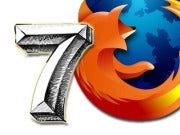Earlier this month, we showed you a data visualization from the folks over at Bime concerning the demographics of Google+ early adopters.
That analysis was based on a little over 4.4 million Google+ users, a little under a fifth of the reported total users at the time. What it found was that the landscape was dominated by men, by a huge margin of 71.2% to 27.8%. Other interesting stats included to overwhelming population of engineers and Google employees using the social network
Bime has updated their dashboard, this time including a voluntary sample of over 10 million Google+users. Even with Google opening up the registration to allow many more users, the male/female ratio remains basically unchanged. The girls have yet to flock to Google+.
Okay, the dynamic has shifted a little bit. Instead of 72-28 in favor of the guys, the figure is now 70-30. Come on, gals, it’s looking like an awkward middle school party in here.
Here’s what has changed in the last few weeks:
First, the occupation landscape has shifted. Back in July, users overwhelmingly identified themselves as engineers, developers, and designers. In August, the largest occupation has shifted to student.
In July, the company with the largest percentage of Google+ users was, unsurprisingly, Google. Now, the largest employment group identified by users is “self-employed.” New entrants into the top companies list include Sony, HP, and strangely enough, Subway.
One interesting stat to emerge is the number of inactive users on Google+. Apparently, 83% of users are classified as inactive. To be fair, reports have stated that a high percentage of Twitter users are classified “inactive” as well. No extra details about what constitutes “inactive” are given.
The prevalent stat, however, continues to be the male dominance of the social network in its early stages. That gender distribution has to level out, right?
Check out the visualization below -

Source : webpronews






